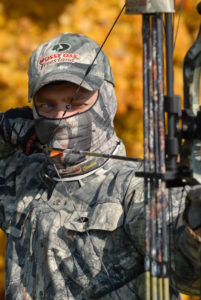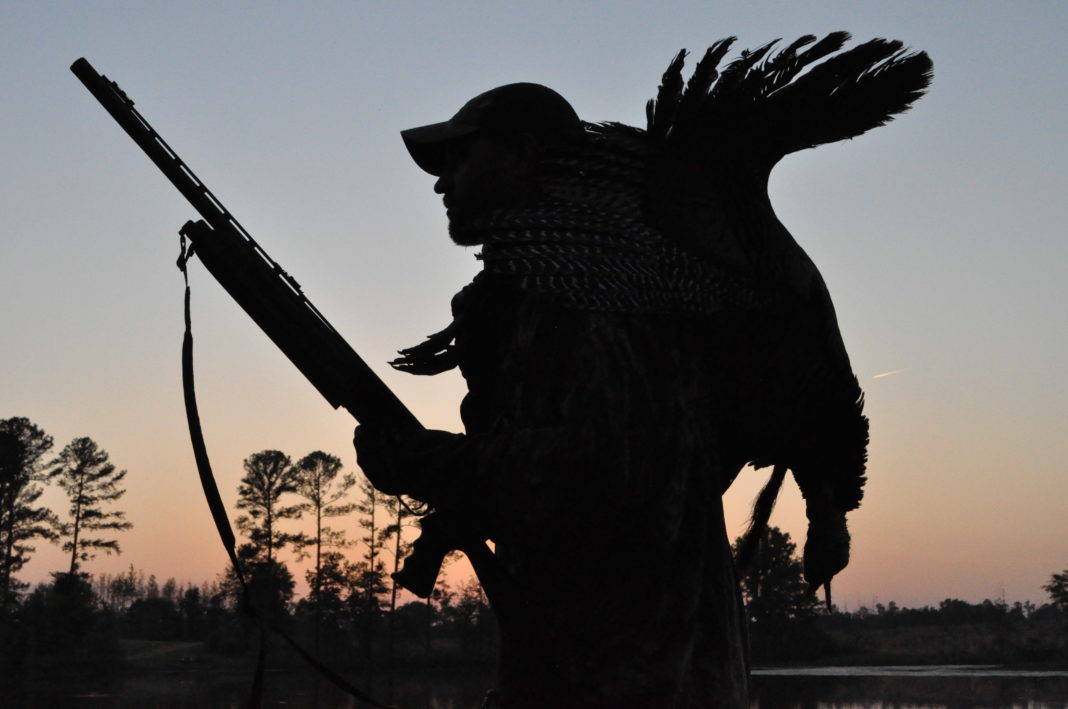Fall turkey hunting occurs in the pre-rut period for whitetail deer in many states, providing a mixed bag, safari-style hunt for archers. With bow or shotgun, fall turkey hunting is fun and may provide the intel that will fill your deer tag on opening day. If you’ve never hunted fall birds, it’s easy to learn and you only need a few calls to succeed. Check out this 6-step plan.
Get Out There: Wild turkey populations are thriving across the United States so there’s no worry about reducing numbers in the fall. Turkeys survive even the harshest winters and ice storms as well as a host of predators that naturally feed on them.
Unlike spring turkey hunting, which often keys on gobbling, fall hunting hinges on finding a flock and the signs it leaves behind. If you enjoy active hunting styles, you will quickly embrace this quest where you can cover miles of mountain ground to locate the most promising spots.

Scout While You Hunt: As autumn leaves fall, turkeys will scratch in them to find seeds, small acorns, and other food sources. These basketball-hoop size bare spots in leaf litter are a sure sign that birds are in the area. Once located, you can slow down, use turkey calls, and perhaps call in the flock.
Turkey seasons often occur in the whitetail pre-rut and as you cover large amounts of territory in search of flocks, you will often encounter fresh rubs and scrapes. I frequently begin a hunt with a bow and a shotgun in the back of my truck. I start looking for turkeys, but if I locate a smoking scrape, I return to the truck and exchange gear.
Easy Calls: If you are new to turkey hunting, watch a few YouTube videos and buy a box caller. My personal favorite is the kind that has a hen call on one side and a gobbler call on the other. Make sure that you have the caller secured with a rubber band or other elastic device. These callers are so easy to use that a lose one will sound like a turkey as you walk through the woods. That’s both ineffective and dangerous as another hunter could mistake your movement for a turkey.
Learning Curve: Spring turkey hunters must out-fox mature birds that listen to the sounds of flock-mates each day. Not so with fall birds. As flocks mature, they must learn to “talk” and make a wide variety of sounds. As a result, it’s difficult to make a “bad” turkey call in the fall because few turkeys sound alike.
I remember sitting in the mountain on a warm fall day and practicing with a box caller that rubbed against the stock of my shotgun. Eventually, I began to play around with musical tunes and soon heard leaves rustling. My unique sound lured in a flock of turkeys and I downed the lead bird as it approached.

Bad Weather Equals Good Hunting: Rainy weather will keep most hunters out of the turkey woods, yet the silent terrain gives you an advantage. It’s much easier to sneak through timber and over ridgetops without being heard. Bowhunters get the double advantage of silently slipping through deer country with the option of white meat or dark.
Turkeys and deer often occupy the same habitat and it’s common to see turkeys from a deer stand. You can hunt turkey from a stand, and many archers carry a turkey call with them during parallel seasons. Turkey calls won’t scare deer and they can lure a flock right under your sit.
Safety First: Most states don’t require hunters to wear blaze orange, and experienced hunters can make very realistic turkey calls. Always use your full gamut of hunting skills to keep safe. If you are calling and a hunter approaches, use your full voice and say “hello.” Don’t move until you are sure he recognizes your location and allow him to move well out of range before calling again.
Fall turkey hunting is ideal for the active hunter or for the tree-stand bowhunter who wants to add variety to each sit. Keep your call handy and be prepared for extra excitement in the fall leaves.



















![The Best Deer Camp Chili [VIDEO] Deer Chili Ingredients, Tomatoes, Chili Spices](/wp-content/uploads/2015/10/Deer-Chili-Deer-Camp-Recipe-218x150.jpg)
![How to Call Elk Early in the Season [VIDEO]](/wp-content/uploads/2016/08/byers003-218x150.jpg)




![Idiots Disturb Hunter: How Would You Have Handled It? [VIDEO]](/wp-content/uploads/2015/10/DSC00110-e1474487693878-100x70.jpg)
![Albino Buck Shocked to Shed His Antlers [VIDEO]](/wp-content/uploads/2015/10/AlbinoDeer-100x70.jpg)